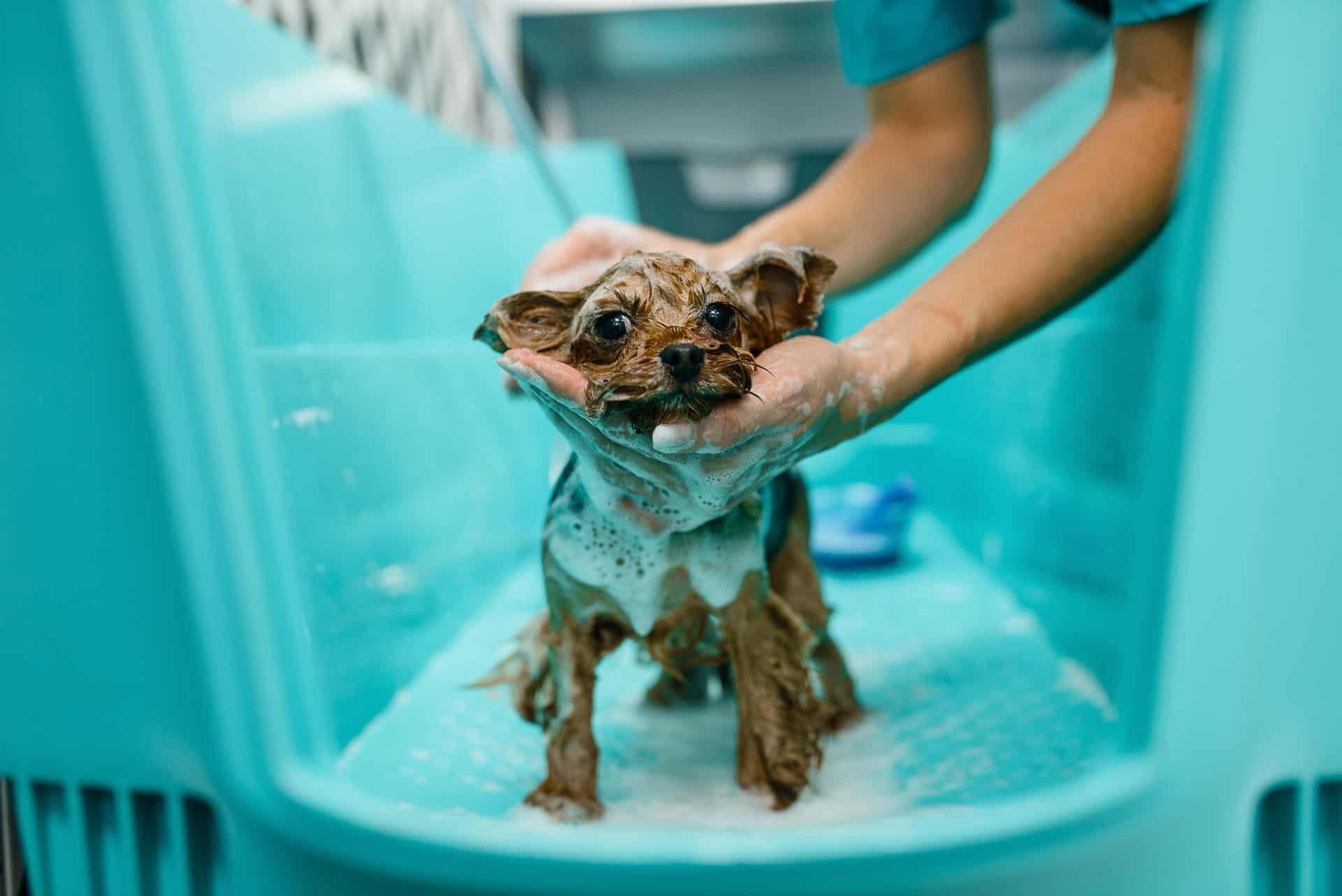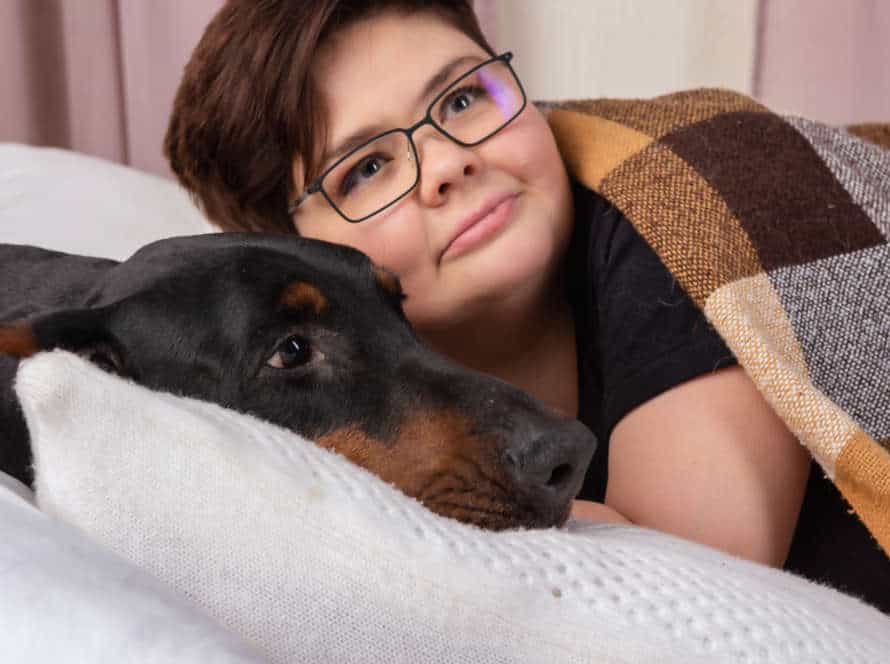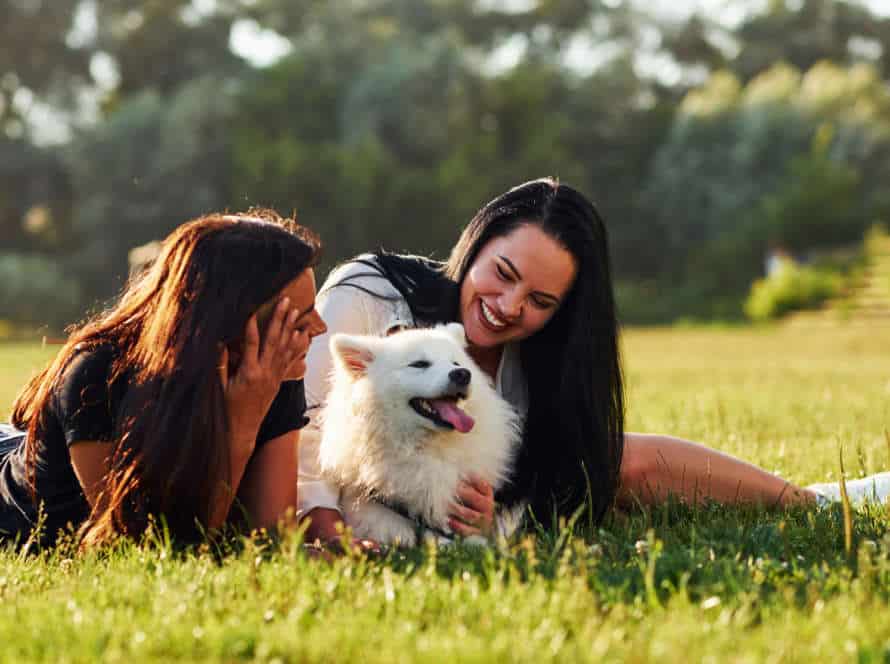Puppy Grooming 101: Tips for a Well-Groomed Pup
Puppy grooming is important for your furry pal’s health, cleanliness, and comfort. Here are some tips:
- Brushing: Brush regularly to get rid of dirt, debris, and fur. Use a soft-bristled brush so you don’t irritate your pup’s skin.
- Bathing: Use a mild dog shampoo and lukewarm water. Keep water & soap away from their eyes, ears, & nose. Towel-dry, then let them air-dry before brushing.
- Nail Trimming: Use a sharp, dog-specific nail clipper. Don’t cut the quick, or it may bleed & hurt.
- Ear Cleaning: Use a dog-specific ear cleaner & a soft cloth/cotton ball for the visible part of their ear flap & ear canal – gently.
- Teeth Cleaning: Use a dog-specific toothbrush & toothpaste to clean teeth regularly.
Pro Tip: Give treats & praise during the grooming process to make a positive experience for both of you!
Understanding Your Puppy’s Coat
Essential to groom and keep a happy pup? Know your pup’s breed and coat type! Coats can be thick, thin, long, or short. Different types need different grooming approaches and tools. This section will tell you what you need to know about your pup’s coat.
Identifying your Puppy’s Coat Type
Figuring out your pup’s coat type is key to understanding how to groom and care for them. Different coat types mean different grooming needs. Here are the four main coat types to identify and consider:
- Smooth Coats: Short, flat hair on the skin.
- Double Coats: Thick undercoat and a long topcoat.
- Wire Coats: Harsh, bristly fur covering the undercoat.
- Long Coats: Soft, long fur.
Know your pup’s coat type and tailor the grooming routine to their needs. This’ll keep ’em clean, healthy, and comfy.
Pro tip: Grooming sessions deepen the bond between you and your pup, and promote hygiene and health.
Choosing the Right Tools and Products for Different Coat Types
Grooming your pup? Get the right tools and products for their coat type! Here are some tips:
- Short coats: Rubber curry brush to remove hair and dirt. Use a dog shampoo made for short hair and a soft-bristled brush.
- Long coats: Slicker brush and metal comb to remove tangles. Use a detangling spray too.
- Double coats: Undercoat rake to get rid of loose fur. Cool setting blow dryer after a bath.
Also, choose high-quality shampoo and conditioner that’s right for the coat type. Keep it healthy and shiny!
Keeping Your Puppy’s Coat Clean and Healthy
Maintaining a clean and healthy coat on your pup is essential for their wellbeing. Knowing your pup’s coat type is key to using the right grooming methods and products. Here are some tips:
- Brush their fur once a week using a comb or brush suited to their coat.
- Use a gentle, puppy-specific shampoo and conditioner when bathing. Rinse thoroughly.
- Dry their coat completely after bathing. Damp fur can cause bacterial and fungal growth.
- Trim their nails regularly. This prevents scratching and tearing of fur.
- Be aware of any changes in the coat, like matting, discoloration, or bald patches. This could be a sign of an underlying health issue.
Pro tip: Exercise and a nutritious diet promote a lustrous coat. Healthy coat=healthy pup.
Bathing Your Puppy
Bathing your pup is a must! Choose the right shampoo – using the wrong one can hurt their skin and fur. Give them time to adjust to the water. This will make bath-time peaceful.
Here are some tips to help you groom your pup properly:
Preparing for Bath Time
Bathing your puppy can be intimidating. However, with the correct prep, bathing can be enjoyable for both of you! Here are some tips for a successful bath-time:
- Gather all required items, like a non-slip mat, puppy shampoo, nozzle, and towel.
- Brush your pup’s fur to get rid of tangles or mats before bathing.
- Fill the tub/basin with few inches of lukewarm water.
- Put the mat at the bottom of the tub to avoid slipping.
- Use the nozzle/cup to wet your pup’s coat, while avoiding face and ears.
- Lather the puppy shampoo on the coat, massaging it in the skin.
- Rinse off the shampoo completely.
- Wrap the pup in a dry towel and pat them dry, not tugging on their coat.
- Pro Tip: Reward your pup with treats and praise after bath time to create a positive association with grooming.
Choosing the Right Shampoo and Conditioner
Choosing the correct shampoo and conditioner is key for your pup’s coat health and looks. Here are some tips:
- Consider pup’s breed, age, and skin type.
- Get a shampoo and conditioner tailored to their needs.
- Pups can be sensitive, so avoid harsh chemicals or fragrances.
- Look for natural ingredients like oatmeal, aloe vera, or tea tree oil. These help soothe dry or irritated skin, support healthy hair growth, and control shedding.
- Test the product on a small patch first to make sure they won’t have an allergic reaction.
- After shampooing and conditioning, make sure to rinse them off completely, so they don’t get skin irritation.
Giving Your Puppy a Safe and Comfortable Bath
Bathing your pup can be tricky, but it doesn’t have to be. With the right tools and methods, you can give your puppy a comfy and secure bath. Here are some tips:
- Prepare all the materials before starting. You’ll need a pup-specific shampoo, a washcloth, a small rubber tub or sink, and a towel.
- Fill the tub or sink with a few inches of warm water. Check the temperature using your elbow or a thermometer. It mustn’t be too hot or cold.
- Place your pup in the water, and use the washcloth to wet and lather their fur. Start at the neck and go down to the tail.
- Use a cup or detachable showerhead to rinse your puppy. Avoid getting water in their ears or eyes.
- Lift your puppy out of the water and wrap them in a towel. Dry their ears, paws, and underbelly with the towel.
These techniques will help give your pup a pleasant, stress-free bath experience.
Brushing Your Puppy
Brushing your pup regularly is essential for keeping its fur and skin in great shape! Doing so can reduce shedding and get rid of dirt and debris that has gotten tangled in the fur. Aim for brushing your puppy at least once a week. Depending on the breed, you may need to brush more often. Let’s take a closer look at how to brush your pup and all the benefits it brings!
Understanding the Importance of Regular Brushing
Brushing your pup is a must for their health and cleanliness. It gets rid of dirt and spreads skin oils, reducing tangles and mats. Here are 4 reasons why regular brushing is so important:
- Prevents skin issues by removing dead cells and stopping matting that leads to irritation.
- Improves blood flow with a nice massage, giving a shiny coat.
- Check for bugs like fleas and ticks, which can be removed before they cause harm.
- Bonding time is created with regular grooming sessions.
Remember to use the right brush. Brush carefully to avoid discomfort.
Choosing the Right Brush for Your Puppy’s Coat Type
Picking the correct brush for your puppy’s fur type is essential for having a healthy, good-looking coat. It also makes the grooming experience comfy for your pup. Here’s what you need to know to choose the best brush:
- Short-haired coat: Bristle brushes are great for short and smooth coats. They remove loose fur and spread natural oils throughout the fur.
- Long-haired coat: Slicker brushes are best for breeds with long hair. They have short, close-together wires that can untangle and get rid of mats without pulling out the fur.
- Curly-haired coat: Pin brushes are ideal for curly hair. The bristles are longer and widely spaced. They help remove dirt and mats without causing discomfort.
- Double-coated breeds: An undercoat rake is the right brush for these breeds. It gets rid of the undercoat without hurting the top coat.
By choosing the right brush, you can make grooming time pleasant for you and your pup.
Brushing Techniques for Different Coat Types
Brushing your pup is essential for healthy skin and a glossy coat. Different breeds have different coat types, so their unique coats need different brushing techniques. Here are a few examples:
- Double-Coated Breeds: Huskies and Golden Retrievers need a tool with long metal pins to extract loose fur from the thick undercoat. Plus, a slicker brush to get rid of small tangles and mats.
- Short-Coated Breeds: Beagles and Boxers require a rubber curry brush for massaging and removing dead hair.
- Wavy or Curly-Coated Breeds: Bichon Frises and Poodles need a slicker brush for tangles and mats. Plus, a comb that works through curls without pulling the fur.
- Long-Coated Breeds: Afghans and Shih Tzus require a comb with long teeth to remove tangles and mats. Plus, a slicker to get rid of loose fur and a boar bristle brush for shine.
Always brush gently, following the direction of the hair growth to prevent harm and discomfort.
Pro Tip: Brushing regularly reduces shedding and mats, and keeps their coat healthy and shiny.
Trimming Your Puppy’s Nails
Tending to your pup’s nails is an imperative part of puppy grooming. It keeps their nails short and healthy, lessening the chances of them being snagged or harmed. You’ll need the correct tools for the job first. Use quality clippers and a nail file.
Here’s a step-by-step guide to how to correctly trim your pup’s nails:
- Prepare your pup: Have your pup sit beside you and get used to the tools you will use to trim their nails.
- Locate the quick: The quick is the pink area where the blood vessels and nerves are found. Avoid cutting this area as it will cause your pup pain and could result in excessive bleeding.
- Clip the nail: Hold your dog’s paw firmly and clip the tip of the nail; be sure not to cut into the quick. If you are unsure of where to clip, trim a little bit and check to see if you’ve crossed into the quick. If not, clip a little bit more.
- Smooth the rough edges: Use the nail file to file the rough edges down until smooth.
- Reward your pup: Give your pup a treat for being patient and sweet during the process.
When to Trim Your Puppy’s Nails
It’s important to know when to trim your pup’s nails. Long nails can cause pain and injuries. Here are signs it’s time:
- Clicking sound? If their nails click on surfaces, they’re too long.
- Can you see the nail length? Trim if so.
- Difficulty walking? Also a sign of long nails.
Trimming nails requires practice, patience, and caution. Use the right clipper, take breaks, and reward your pup after each toe is done.
Gathering Supplies for Nail Trimming
Gathering the right supplies is a must for a stress-free, safe grooming experience. Here’s a checklist of essentials:
- Nail clippers designed for puppies or small dogs.
- Styptic powder to stop bleeding in case you cut too short.
- Treats for positive reinforcement.
- Towel to wrap your puppy to stay still.
- Optional: Nail file/grinder to smooth edges after clipping.
Have all these supplies ready for a smooth and safe nail trimming session.
Step-by-Step Guide to Trimming Your Puppy’s Nails
Trimming your pup’s nails can seem scary for first-time pet parents. But, with the correct tools and approach, it can become part of their regular grooming. Here’s a guide to help you trim them easily:
- Step 1: Get your supplies ready – dog nail cutters, styptic powder and treats.
- Step 2: Let your pup sniff and look at the tools – so they’re comfy.
- Step 3: Gently hold their paw and press on their pad to extend the nail.
- Step 4: Trim from under the nail bed, avoiding the quick – the blood vessel.
- Step 5: Give a treat and praise.
Go slow, be patient, and stop if your pup feels uncomfortable. Regular trimming can keep their nails healthy and comfy. Pro tip: Handle their paws from when they’re young – so they’re familiar.
Cleaning Your Puppy’s Ears
Clean ears are essential for pup grooming! Regularly clean their ears to avoid infection and other problems caused by wax or dirt. Here’s the basics for cleaning pup ears: materials needed and the process.
Why Cleaning Your Puppy’s Ears is Important
Cleaning your pup’s ears is essential for their health. Their ear canal is vertical, making it easy for wax, moisture, and debris to enter. This can cause issues, like ear infections and hearing loss.
So, to clean their ears:
- Get a good ear cleaning solution for dogs.
- Put a few drops in the ear canal and massage for 30-60 seconds.
- Let your pup shake their head to get rid of the debris and wax.
- Use a clean cotton ball or pad to wipe away the wax and debris.
- Repeat on the other ear.
- No cotton swabs – they could push wax further in.
Make ear cleaning a part of your pup’s grooming routine. Nip any potential problems in the bud and keep your pup healthy and happy!
Gathering Supplies for Ear Cleaning
Gather these items before cleaning your pup’s ears:
- Cotton Balls/Q-tips: Essential for wiping their ears.
- Ear Cleanser Solution: Pick a formula made for pups. Avoid water or soap, it can be irritating.
- Treats: Distract pup and reward them for good behavior.
- Towel/Pet Wipes: Clean up any messes that may occur.
Once you have these, you’re ready to start the ear cleaning process! Pro tip: Consult your vet if in doubt & never use human ear solution on pup.
Step-by-Step Guide to Cleaning Your Puppy’s Ears
Cleaning your pup’s ears is necessary for their grooming. Not doing this can lead to infection and other health issues. Here’s how to do it right:
- Check ears for redness, discharge, or bad smell.
- Get cotton balls, swabs, and special ear-cleaning solution.
- Dampen cotton ball with solution and clean the outside of the ear.
- Use a cotton swab for the inner crevices, but don’t put it too deep.
- Repeat on the other ear.
Reward pup with treats and praise!
Pro Tip: If you’re not sure, ask the vet.
Maintaining Dental Hygiene
Pup dental hygiene is an absolute must for good health. Brushing regularly and professional cleanings are key. Let’s explore how to keep pup teeth and gums in top shape. Tips on proper brushing and when to bring your pup to the dentist will be provided.
The Importance of Dental Hygiene for Your Puppy
It is vital to ensure your puppy’s long-term wellbeing by keeping up with their dental hygiene. Neglecting it can lead to tooth decay, gum diseases, bad breath, and even fatal infections. Here are some reasons why dental hygiene is so essential:
- Avoiding tooth decay and gum diseases.
- Reducing bad breath.
- Protecting against severe infections which can harm internal organs.
- Keeping healthy teeth and gums for proper chewing and digestion.
- Stopping the build-up of tartar and plaque that can cause oral infections and tooth loss.
Regular brushing, dental check-ups, and a nutritious diet are necessary to keep your puppy’s teeth and gums in good shape. Ask your vet for advice on dental hygiene products and techniques for your pup.
Choosing the Right Dental Products for Your Puppy
Selecting the ideal dental products for your pup is vital for their dental health and cleanliness. Here are some tips:
- Brush: Get a tiny brush with soft bristles specially made for puppies. Don’t use a human toothbrush–the bristles might be too tough and cause discomfort.
- Toothpaste: Get a dog toothpaste with natural ingredients and a taste your puppy likes. Don’t use human toothpaste–it can contain substances that may be damaging to dogs.
- Chews: Get chews approved by vet associations with a rough texture to help remove plaque and tartar.
- Additives: Water additives are an easy way to reduce plaque and tartar. Get additives with natural ingredients and formulated for dogs.
Regular dental care is imperative to keep your puppy’s oral health in good shape. Ask your vet for the most suitable dental products and practices for your pup.
How to Brush Your Puppy’s Teeth
Brushing your pup’s teeth is important for their dental hygiene. But, it can be daunting for first-time puppy owners. Here’s how to do it without a fuss.
- Start by getting your pup used to you touching their mouth. Gently massage their lips and gums with your fingers for short periods. Do this every few days.
- Next, let them taste toothpaste, and then use a soft brush to gently brush their teeth. Increase the duration and intensity of brushing sessions as your pup gets more comfortable.
- Use dog-specific toothpaste to keep them safe. Brush their teeth once a day – preferably before bedtime.
It’s never too early to start their dental routine. With the right approach, it can be a lovely bonding experience for you and your pooch!
Handling Grooming Emergencies
Grooming disasters like matting and fleas can occur to any pup. It’s essential to understand how to handle these situations if they appear. In this part, we’ll go over tips for dealing with matting, fleas and other regular grooming issues. You’ll find out about the supplies you require and the steps you should take to ensure your pup’s safety.
Dealing with Ticks and Fleas
Ticks and fleas can be a major issue for your furry friend. Here are some tricks to help you manage them, and keep your pup spruced up:
- Inspect your pup’s fur with a fine-toothed flea comb, particularly in hot and humid conditions.
- Use a tick removal tool to delicately take out ticks from your pet’s skin, without leaving the head behind.
- Bathe your pet with flea and tick shampoo, particularly in the peak season of fleas and ticks.
- Vacuum your home routinely and wash your pet’s bedding to avoid re-infestation.
- Use flea and tick prevention products suggested by your vet to keep fleas and ticks away.
Remember, keeping your pup clean is an essential part of having a pet, and regular grooming can help you spot grooming emergencies before they become major problems.
Handling Skin and Coat Issues
Skin and coat problems are common pup-grooming emergencies. Here are some tips:
- Use quality shampoo and conditioner to keep pup’s coat clean and healthy.
- Brush their coat often to prevent mats and tangles, especially if they have long fur.
- Use a flea comb to check and remove fleas and ticks.
- If your pup’s skin is sensitive, use hypoallergenic grooming products and avoid harsh chemicals.
- Check for skin irritations, rashes, or lumps regularly. If something seems odd, take pup to the vet fast.
Following these grooming practices will give your pup a soft and shiny coat. Pro Tip: Grooming helps strengthen the bond between you and your fur-friend!
Knowing When to Call a Professional Groomer.
Grooming your pup is a must for their health. But, sometimes you’ll need to call in a pro groomer for emergencies. Here are some times when you should:
- Matting: Your pup’s fur can tangle and cause skin issues. A groomer can safely remove mats without harming them.
- Nail trimming: If you’re not confident trimming their nails or they’re wiggly, a groomer can step in.
- Ear cleaning: Regular cleaning is important but it’s tricky to do at home. A pro groomer can do it with ease and reduce infection risks.
- Skin conditions: A groomer can help treat if your pup’s skin is not right. And remember, your pup’s safety is the #1 priority – so don’t hesitate to call a pro!
Frequently Asked Questions
1. How often should I groom my puppy?
You should groom your puppy at least once a week. However, if your puppy has a longer coat, it may require more frequent grooming.
2. What tools do I need for puppy grooming?
You will need a brush, comb, nail clippers, shampoo, and conditioner. It’s also a good idea to have treats on hand to reward your puppy for good behavior during grooming sessions.
3. How do I brush my puppy’s coat?
Start by brushing your puppy’s coat in the direction of hair growth, using a slicker brush or pin brush. Be sure to pay extra attention to the areas around the ears, under the arms, and around the genitals.
4. How often should I bathe my puppy?
You should only bathe your puppy when it’s absolutely necessary, usually every 2-3 months. Too much washing can strip their coat of natural oils, which can lead to dry skin and other skin problems.
5. How do I trim my puppy’s nails?
Using a dog nail clipper, carefully trim each nail just below the quick (the pink part of the nail that contains blood vessels). Be sure to have styptic powder or cornstarch on hand in case you accidentally cut the quick and cause bleeding.
6. Should I take my puppy to a professional groomer?
While it’s not necessary, taking your puppy to a professional groomer can be beneficial. They have the expertise, tools, and equipment necessary to keep your puppy’s coat in top shape. Additionally, grooming sessions with a professional can be a positive socialization experience for your puppy.







